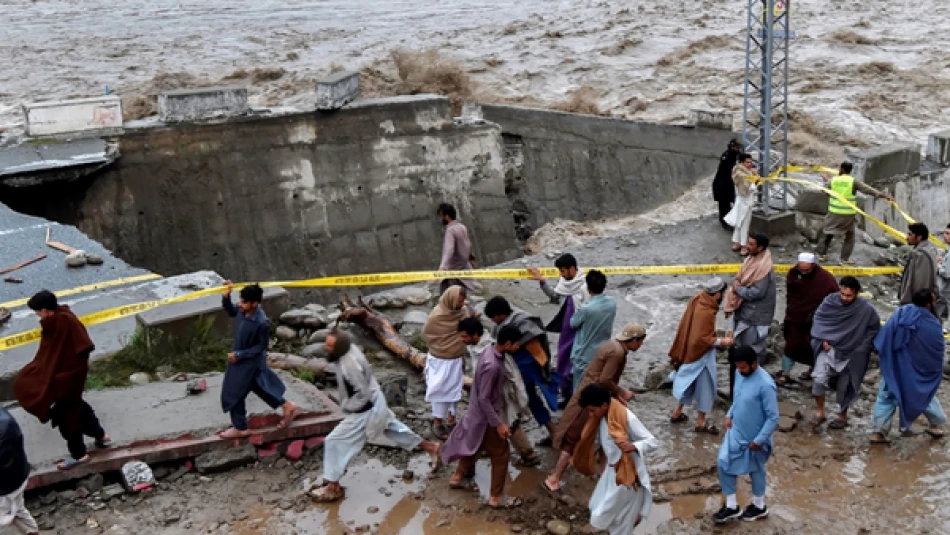
Flood Victims Search Intensifies in Northern Pakistan as Disaster Unfolds
Race Against Time: Pakistan's Mountain Tourism Crisis Exposes Infrastructure Vulnerabilities
At least 12 tourists remain buried under massive piles of rocks and mud in northern Pakistan's mountainous region, as rescue teams expand their search operations following devastating monsoon-triggered floods earlier this week. The incident highlights the growing risks facing Pakistan's adventure tourism sector and the critical vulnerability of the China-Pakistan Economic Corridor's main artery.
Rescue Operations Intensify Along Strategic Highway
Government spokesperson Faizullah Faraq confirmed that rescue workers are racing against time to locate the missing tourists, who are believed to be trapped beneath debris along a destroyed section of the Karakoram Highway. The strategic route serves as Pakistan's primary connection to China and a vital corridor for the $62 billion China-Pakistan Economic Corridor (CPEC) project.
Engineers are working around the clock to reopen the highway, which carries significant economic importance beyond tourism. The closure disrupts the flow of goods and trade between Pakistan and China, potentially affecting bilateral commerce worth billions of dollars annually.
Military Mobilization Reveals Scale of Crisis
The Pakistani military deployed helicopters this week to evacuate 300 stranded tourists from remote areas affected by landslides and flooding. Military aircraft transported the rescued visitors to major cities, demonstrating the scale of the emergency response required.
This massive evacuation operation underscores how quickly Pakistan's northern tourism regions can become isolated during extreme weather events, leaving both domestic and international visitors vulnerable.
Climate Change Threatens Pakistan's Tourism Economy
Pakistan's northern regions, including Gilgit-Baltistan and Khyber Pakhtunkhwa, have become increasingly popular destinations for adventure tourism, attracting visitors to peaks like K2 and scenic valleys. However, the country ranks among the world's most climate-vulnerable nations, with glacial lake outburst floods and extreme monsoon patterns becoming more frequent.
The tourism industry contributes approximately 2.8% to Pakistan's GDP, with northern mountain tourism representing a growing segment. These recurring disasters threaten to undermine confidence in Pakistan as a safe destination for international adventure travelers.
Strategic Infrastructure at Risk
The Karakoram Highway's closure carries implications beyond tourism. As the highest paved international road in the world, it serves as the primary land route for China's Belt and Road Initiative projects in Pakistan. Frequent weather-related disruptions raise questions about the long-term viability of relying on this route for major trade flows.
The incident reflects a broader challenge facing developing nations: balancing economic opportunities from tourism and trade infrastructure with the realities of climate vulnerability and extreme weather events. Pakistan's response to this crisis may influence future investment in both tourism development and climate-resilient infrastructure along this critical corridor.
 Layla Al Mansoori
Layla Al Mansoori







